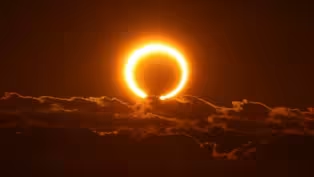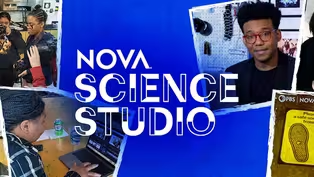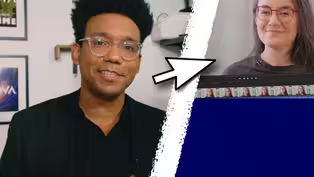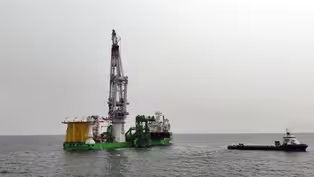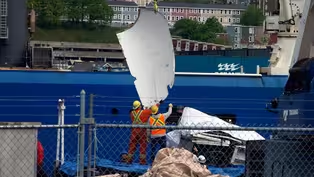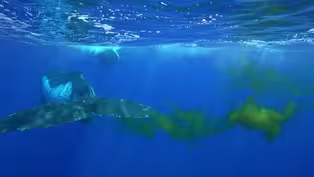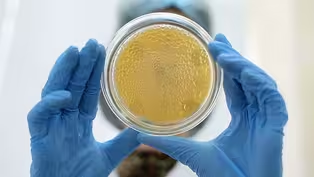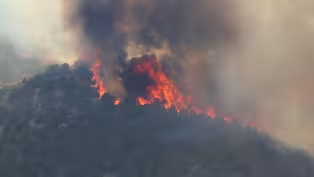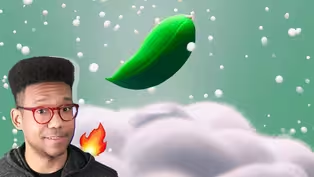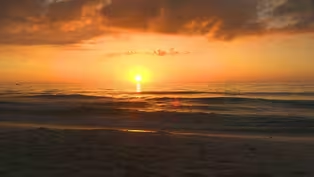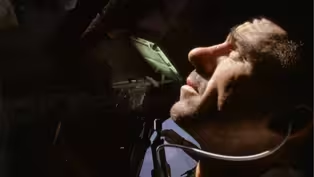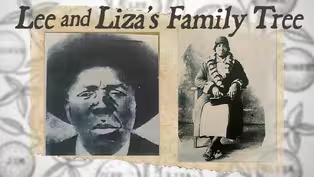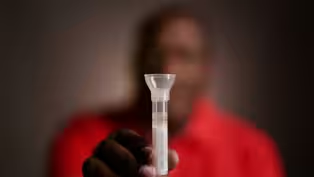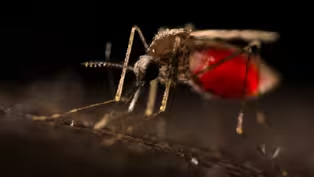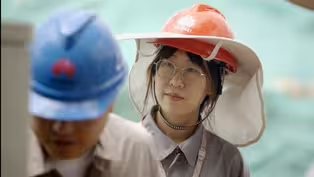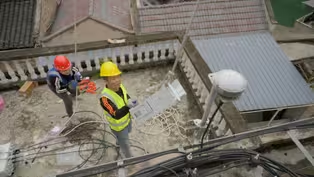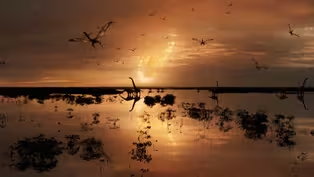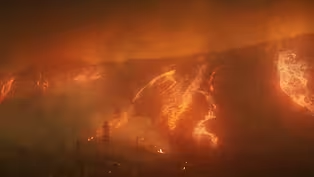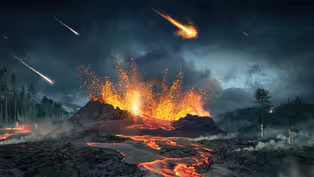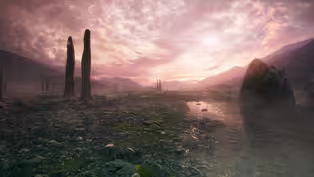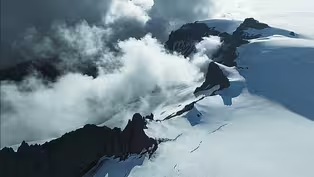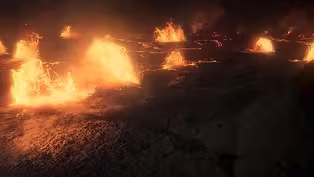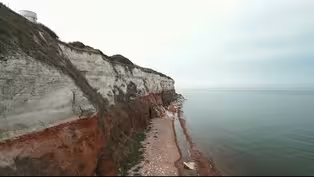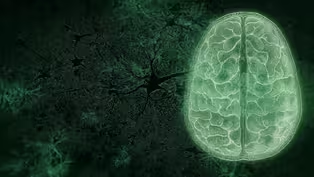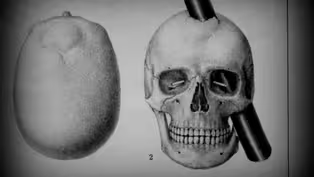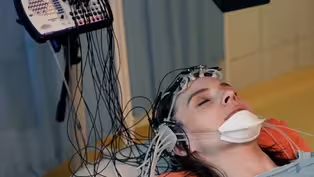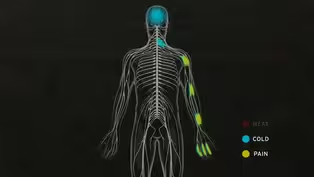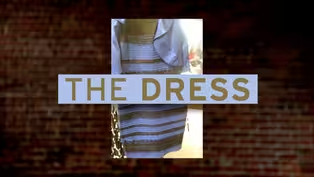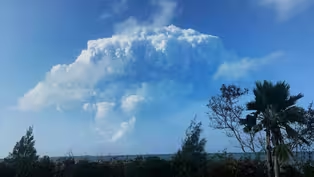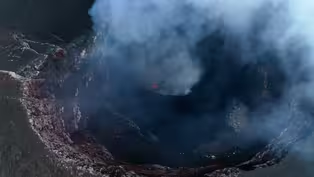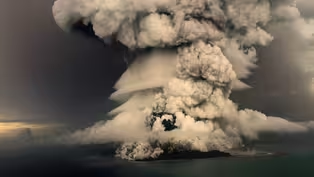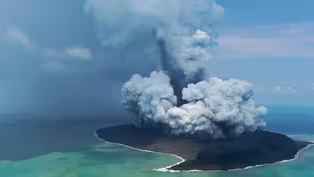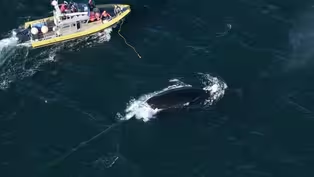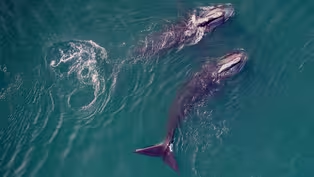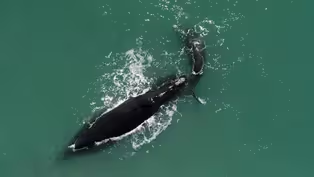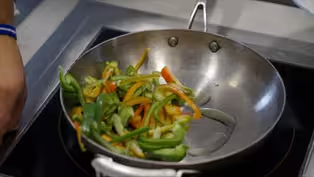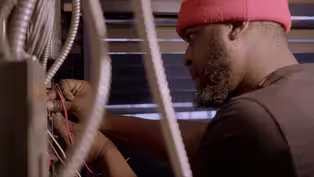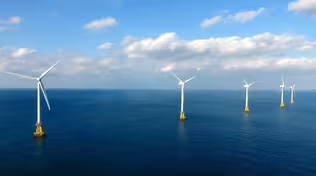
How the West Is Making It Rain, With Science
Clip: Season 50 | 6m 22sVideo has Closed Captions
A method of boosting snow and rainfall may help ease drought conditions in the western US.
Cloud seeding techniques boost clouds’ ability to drop precipitation by releasing particles that attract water, making it easier for water droplets or snowflakes to form.
Problems playing video? | Closed Captioning Feedback
Problems playing video? | Closed Captioning Feedback
National Corporate funding for NOVA is provided by Carlisle Companies and Viking Cruises. Major funding for NOVA is provided by the NOVA Science Trust, the Corporation for Public Broadcasting, and PBS viewers.

How the West Is Making It Rain, With Science
Clip: Season 50 | 6m 22sVideo has Closed Captions
Cloud seeding techniques boost clouds’ ability to drop precipitation by releasing particles that attract water, making it easier for water droplets or snowflakes to form.
Problems playing video? | Closed Captioning Feedback
How to Watch NOVA
NOVA is available to stream on pbs.org and the free PBS App, available on iPhone, Apple TV, Android TV, Android smartphones, Amazon Fire TV, Amazon Fire Tablet, Roku, Samsung Smart TV, and Vizio.
Buy Now

NOVA Labs
NOVA Labs is a free digital platform that engages teens and lifelong learners in games and interactives that foster authentic scientific exploration. Participants take part in real-world investigations by visualizing, analyzing, and playing with the same data that scientists use.Providing Support for PBS.org
Learn Moreabout PBS online sponsorship- [Alex] Could this little trailer help save the drought-stricken West by bringing more rain and snow to the region?
That's what these engineers think.
They've parked the trailer up here in the mountains of Colorado, in hopes of changing the weather.
And there's dozens of them just like this in use right now.
It might all sound like science fiction, but it's a weather modification technique called cloud seeding, and it was first done successfully as early as the 1940s.
In Colorado, some ski towns were cloud seeding as far back as the '70s.
And it's also been used around the globe.
China's cloud seeding program reportedly had a plan to make clouds rain before they had a chance to float over the Beijing Olympic stadium.
You can find cloud seeding from California to North Dakota.
But how does cloud seeding work?
To learn more, I've come to Colorado to see how seeding works up close and personal.
The night before I arrived, the clouds above me were seeded.
- We are approaching the location of our cloud seeding generator.
- [Alex] Scott Griebling is a water resources engineer for the local water conservancy district.
The locations chosen for these sites had the right elevation and can reach the perfect clouds.
- Our district has come to the conclusion that cloud seeding and weather modification is a very safe and very cost effective way of increasing local water supplies.
- [Alex] So how do you seed a cloud?
- Hey, welcome to our remote generator.
- [Alex] Garrett Cammans is president of a cloud seeding company that operates hundreds of cloud seeding sites.
- And it sounds like you're terraforming or completely changing the climate of an area, but that's not how it works.
- [Alex] Since clouds are basically water vapor, the idea is to release particles into the clouds that will attract water, making it easier for water droplets or snowflakes to form.
They get heavier, and eventually fall to earth instead of staying in the sky.
This Colorado team uses a solution with a chemical called silver iodide, which, when burned, splits into billions of particles per gram.
- Ice is the perfect seeder.
Clouds seed themselves with ice crystals.
Silver iodide is really the closest and similar structure as ice, so that's why we are using silver iodide.
- [Alex] Here, Cammans activates the flame.
It contains a silver iodide solution mixed with propane.
A series of tanks and regulators manage the pressure and exact flow rate of the silver iodide solution.
- A typical storm system will only drop about 10% of its moisture.
We're hoping that the storm system will drop 10 1/2 to 11 1/2% of its moisture.
- [Alex] Okay, but does cloud seeding actually work?
- We would come out with research aircraft and with ground-based radars, and we would basically measure the atmosphere prior to cloud seeding and during cloud seeding.
- [Alex] The landmark Snowie project set out to discover just that.
It took a pretty clever approach.
A plane flying back and forth dropped chemicals into the clouds.
When the team studied the resulting precipitation, they found it had snowed in a zigzag pattern, matching the path of the seeding agent's flow.
Could it have all just been a fluke?
- We were in shock or in disbelief.
And then, of course, we were saying, "Okay, we saw it one day.
Can we repeat it?"
- [Alex] They did the same experiment several more times.
As the wind blew the seeding agent, the same zigzag line of precipitation appeared, which you would never see in a natural snowfall.
- This is revolutionary because we have a hard time quantifying what really comes out from cloud seeding.
- [Alex] So, at least in some situations, cloud seeding can increase precipitation, but is up against challenging odds.
- Concern about reservoir levels.
Over the last 43 years, snowpack has only been this low or lower seven times.
- I'm in a creek.
Snow is crucial to the Rockies.
Because as it gradually melts, water runs downstream, replenishing bodies of water for nearby towns.
That's why Colorado's Water Conservation Board partnered with a water conservancy district to share the cost of hiring a cloud seeding company to seed in the area.
But is cloud seeding safe?
Silver iodide has been used since the 19th century in photo development, and also as an antiseptic in medicine.
Exposure to a large amount of it could even lead to skin and eye irritation.
High levels of silver iodide in one area could be toxic to organisms in our water and soil.
For these reasons and others, state cloud seeding efforts are reported to federal agencies.
- And we wanna be conscious.
We don't really wanna put a lot of silver into the atmosphere.
- [Alex] Over the years, another big concern about cloud seeding has been that it could cause too much precipitation, such as this massive flood in a small town in the UK, which destroyed homes and killed more than 30 people.
While circumstantial, some linked it to a nearby cloud seeding program.
- Cloud seeding programs actually have to play by the rules.
As soon as they have a certain snow depth, they stop seeding in order to prevent floods.
- [Alex] Today, Cammans' company has hundreds of seeding sites, and across the globe, several other nations are testing the technology.
In fact, nearly every meteorologist I spoke with told me to get ready, as they expect cloud seeding, once a big question mark, to increase in frequency.
As for the potential to impact drought, it may be a long time before scientists know for sure.
Even if widely used, it's still difficult to quantify exactly how much additional precipitation comes from seeding a cloud.
We all know about the greenhouse effect, but how many of us understand why it happens?
Our friends at Reactions uncover what's so unique about carbon dioxide that has allowed it to transform our entire planet.
Check out the link in the description, and let them know Nova sent you.
What to know about the “Ring of Fire” Eclipse
Video has Closed Captions
Clip: S50 | 46s | The "Ring of Fire" eclipse is coming. Seriously, don’t look directly at it. (46s)
Mastering Lighting and Audio in Video | NOVA Science Studio
Video has Closed Captions
Clip: S50 | 4m 4s | Elevate lighting and audio with these techniques to highlight creative storytelling (4m 4s)
Introducing the NOVA Science Studio Program
Video has Closed Captions
Clip: S50 | 2m 42s | The NOVA Science Studio is a youth science journalism program for high school students. (2m 42s)
How To Film Great Video With A Phone | NOVA Science Studio
Video has Closed Captions
Clip: S50 | 3m 54s | NOVA producer Alex Clark shares 3 fundamentals of shooting with a smartphone. (3m 54s)
How To Do A Video Interview | NOVA Science Studio Tutorial
Video has Closed Captions
Clip: S50 | 3m 56s | Interviewing is one of the most important parts of creating compelling videos (3m 56s)
Complete Guide To Editing | NOVA Science Studio Tutorials
Video has Closed Captions
Clip: S50 | 16m 21s | Learn editing tips and techniques to ensure a cohesive story from start to finish (16m 21s)
Rare Fossil Appears to Show Mammal Attacking Dinosaur
Video has Closed Captions
Clip: S50 | 3m 26s | Could a small mammal take down a dinosaur? (3m 26s)
The nation’s first big offshore wind farm is coming
Video has Closed Captions
Clip: S50 | 5m 22s | The first commercial-scale offshore wind farm in the US is being built off Massachusetts. (5m 22s)
What Made the Titan Submersible Design Unconventional?
Video has Closed Captions
Clip: S50 | 5m 5s | An international investigation into the fatal submersible implosion is underway. (5m 5s)
Could Whale Poop Help Cool the Planet?
Video has Closed Captions
Clip: S50 | 2m 43s | Marine biologists unravel how whales and their poop trap carbon and feed the ocean. (2m 43s)
This Fungus Is Spreading Rapidly in Hospitals
Video has Closed Captions
Clip: S50 | 3m 24s | Cases of Candida auris are increasing every year. (3m 24s)
There’s Something Living in Wildfire Smoke
Video has Closed Captions
Clip: S50 | 1m 59s | Wildfire smoke can carry harmful microorganisms long distances. (1m 59s)
How the West Is Making It Rain, With Science
Video has Closed Captions
Clip: S50 | 6m 22s | A method of boosting snow and rainfall may help ease drought conditions in the western US. (6m 22s)
Soothing Science: The Light You See at Sunset
Video has Closed Captions
Clip: S50 | 8m 1s | Relax to the sound of the ocean and discover the science behind sunsets. (8m 1s)
The Mystery and Physics of the Spiral Football Pass
Video has Closed Captions
Clip: S50 | 3m 43s | The way the spiral football pass travels through the air baffled physicists for years. (3m 43s)
Astronaut Walter Cunningham on the Historic Apollo 7 Mission
Video has Closed Captions
Clip: S50 | 32m 26s | He discussed the first crewed Apollo mission, Apollo 7, with NOVA in 1998. (32m 26s)
Lee and Liza's Family Tree Preview
Video has Closed Captions
Preview: S50 Ep18 | 30s | A family turns to science in their struggle to rediscover a history obscured by slavery. (30s)
Can DNA technology Help Rebuild a Family Tree?
Video has Closed Captions
Clip: S50 Ep18 | 3m 28s | A Black family uses DNA technology to unlock secrets of the past. (3m 28s)
Why Mosquitos Are Humanity’s Deadliest Creature
Video has Closed Captions
Clip: S50 Ep17 | 3m 37s | About 80% of deaths caused by Malaria annually are young children, below the age of five. (3m 37s)
Inside the Fight To Develop a Malaria Vaccine
Video has Closed Captions
Clip: S50 Ep17 | 4m 18s | These scientists were on the verge of a breakthrough with a promising vaccine nearing approval. (4m 18s)
Video has Closed Captions
Clip: S50 Ep17 | 2m 34s | Today, Malaria is considered a tropical disease, but it wasn’t always that way. (2m 34s)
Inside Huawei: China’s Tech Giant
Video has Closed Captions
Clip: S50 Ep16 | 3m 40s | Working at Huawei can be intense - six day weeks and 12 hour days are the norm. (3m 40s)
Inside China's Tech Boom Preview
Video has Closed Captions
Preview: S50 Ep16 | 30s | The inside story of China’s meteoric rise to the forefront of global innovation. (30s)
Video has Closed Captions
Clip: S50 Ep16 | 4m 28s | A tech war between China and the West is starting to heat up. (4m 28s)
What Caused the Dinosaurs to Go Extinct?
Video has Closed Captions
Clip: S50 Ep15 | 1m 50s | How did an asteroid impact on one side of the planet cause global devastation? (1m 50s)
The Catastrophe That Killed 90% Of Earth’s Species
Video has Closed Captions
Clip: S50 Ep14 | 1m 34s | An ancient catastrophe killed nearly all life on Earth - and an asteroid wasn’t to blame. (1m 34s)
Ancient Earth: Inferno Preview
Video has Closed Captions
Preview: S50 Ep14 | 30s | How did life bounce back after a cataclysmic extinction wiped out some 90% of all species? (30s)
Giant Prehistoric Fungi Once Ruled the Earth
Video has Closed Captions
Clip: S50 Ep13 | 3m 43s | Fossils show that millions of years ago, 20-foot-high fungi grew on Earth. (3m 43s)
How Life Survived When Earth Was Covered in Ice
Video has Closed Captions
Clip: S50 Ep12 | 3m 6s | Hundreds of millions of years ago, Earth was encased in ice. How did life survive? (3m 6s)
Video has Closed Captions
Clip: S50 Ep11 | 3m 9s | For millions of years, Earth was a fiery hellscape, inhospitable to life. (3m 9s)
Ancient Earth May Have Had Red Oceans
Video has Closed Captions
Clip: S50 Ep11 | 3m 34s | On Ancient Earth, rust deep in the oceans played a critical role in the formation of Earth (3m 34s)
Your Brain: Who's in Control? Preview
Video has Closed Captions
Preview: S50 Ep10 | 29s | Dive into the subconscious to see what’s really driving the decisions you make. (29s)
What If Part of Your Brain Was Missing?
Video has Closed Captions
Clip: S50 Ep10 | 2m 29s | An injury cost Phineas Gage part of his brain, but he lost something else too. (2m 29s)
What Happens in the Brain When you Sleepwalk?
Video has Closed Captions
Clip: S50 Ep10 | 3m 55s | Some people can do complex behaviors like walking and driving while sleeping. (3m 55s)
How Trauma Can Alter Your Biology
Video has Closed Captions
Clip: S50 Ep10 | 4m 40s | Your ancestors' experiences might influence how your brain is wired today. (4m 40s)
Your Memories Are Not as True as You Think
Video has Closed Captions
Clip: S50 Ep9 | 3m 51s | It turns out memories have a very shaky foundation. (3m 51s)
Your Brain: Perception Deception Preview
Video has Closed Captions
Preview: S50 Ep9 | 29s | Neuroscientists discover the tricks and shortcuts the brain takes to help us survive. (29s)
Is the Human Brain Actually Two Minds?
Video has Closed Captions
Clip: S50 Ep9 | 5m 17s | Severing the connection between the two halves of the brain reveals how the hemispheres function. (5m 17s)
Video has Closed Captions
Clip: S50 Ep9 | 3m 40s | This experiment shows how the brain can interpret — and misinterpret— pain. (3m 40s)
How Your Brain Interprets Color
Video has Closed Captions
Clip: S50 Ep9 | 2m 24s | A vision scientist breaks down the infamous dress debate. (2m 24s)
Witnesses Recount Surviving a Volcanic Explosion
Video has Closed Captions
Clip: S50 Ep8 | 2m 57s | Hear witnesses share how they survived the most explosive event ever recorded on Earth. (2m 57s)
Scientists Make Rare Discovery in Active Volcano
Video has Closed Captions
Clip: S50 Ep8 | 2m 58s | Volcanologists visit Tofua to study the volcano’s activity. (2m 58s)
How an Underwater Volcano Produced a 60-Foot Tsunami
Video has Closed Captions
Clip: S50 Ep8 | 2m 35s | The most explosive event ever recorded on Earth—and the massive tsunami that followed. (2m 35s)
Video has Closed Captions
Preview: S50 Ep8 | 30s | Investigate one of the most powerful volcanic eruptions in recorded history. (30s)
Scientists Attempt To Free Entangled Right Whale
Video has Closed Captions
Clip: S50 Ep7 | 3m 30s | Entanglement responders work to free a critically endangered whale from rope. (3m 30s)
Saving the Right Whale Preview
Video has Closed Captions
Preview: S50 Ep7 | 27s | Follow scientists determined to save the critically endangered right whale. (27s)
Meet Snow Cone the Right Whale and Her Calf
Video has Closed Captions
Clip: S50 Ep7 | 4m 32s | Since 2010, the average time between North Atlantic right whale births has increased. (4m 32s)
Why Induction Stoves Are Better for You and the Environment
Video has Closed Captions
Clip: S50 Ep6 | 2m 56s | Induction stovetops are an energy-efficient alternative to traditional gas stoves. (2m 56s)
How Heat Pumps Can Help Cities Lower Carbon Emissions
Video has Closed Captions
Clip: S50 Ep6 | 4m 17s | Landlords are switching from gas furnaces to heat pumps to reduce their carbon footprint. (4m 17s)
Chasing Carbon Zero Sneak Peek
Video has Closed Captions
Clip: S50 Ep6 | 1m | A new film from NOVA examines technologies that could get us to carbon zero by 2050. (1m)
Providing Support for PBS.org
Learn Moreabout PBS online sponsorship
- Science and Nature

Capturing the splendor of the natural world, from the African plains to the Antarctic ice.

- Science and Nature

Learn how centuries of knowledge helped our ancestors understand the mysteries of space.












Support for PBS provided by:
National Corporate funding for NOVA is provided by Carlisle Companies and Viking Cruises. Major funding for NOVA is provided by the NOVA Science Trust, the Corporation for Public Broadcasting, and PBS viewers.


